The error message "insufficient system resources exist to complete the requested service" occurs when a system lacks the necessary memory, CPU power, or disk space to execute a task. This issue commonly affects Windows systems, APIs, and applications, leading to crashes or failed operations. Understanding its causes and solutions helps optimize system performance and prevent disruptions.
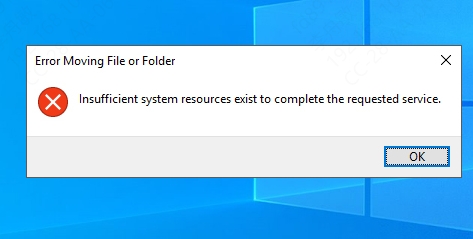
Part 1. What Is "Insufficient System Resources Exist to Complete the Requested Service"?
This error indicates that the system cannot allocate enough resources (RAM, CPU, disk space, or handles) to perform a requested operation. It often appears in Windows environments when running demanding applications, APIs, or services. The issue may stem from software conflicts, hardware limitations, or misconfigured settings.
Part 2. What Causes "Insufficient System Resources Exist to Complete the Requested Service"?
Several factors can trigger the "insufficient system resources exist to complete the requested service" error. Below are the most common causes:
Low RAM (Memory): When the system runs out of available memory, applications and services fail to function properly.
High CPU Usage: Background processes or malware can max out CPU capacity, preventing new tasks from executing.
Insufficient Disk Space: A full hard drive restricts system operations, including virtual memory allocation.
Too Many Open Handles/Processes: Applications may exhaust system handles, leading to resource allocation failures.
Outdated Drivers or OS: Obsolete drivers or an unsupported OS version can cause compatibility issues.
Malware or Virus Infections: Malicious software consumes resources, disrupting normal operations.
Corrupt System Files: Damaged Windows files can lead to improper resource management.
Part 3. How to Fix "Insufficient System Resources Exist to Complete the Requested Service"?
The "insufficient system resources exist to complete the requested service" error might bother you a lot. But don't worry. We have 7 effective methods to easily fix the error.
Method 1: Increase Virtual Memory (Pagefile)
Expanding virtual memory helps compensate for low RAM by allowing the system to use disk space as temporary memory. This is particularly useful when running memory-intensive applications.
Steps to increase virtual memory:
Step 1. Press Win + R, type sysdm.cpl, and hit Enter.
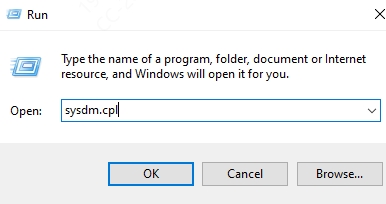
Step 2. Go to the Advanced tab > Performance Settings.
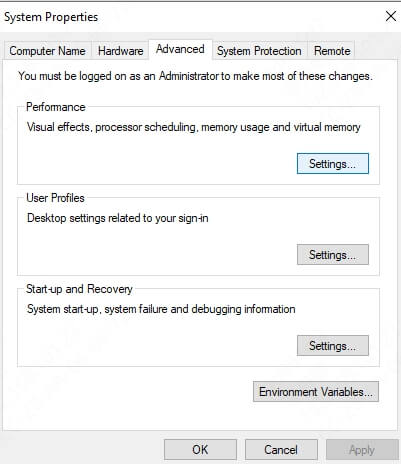
Step 3. Select Advanced > Change under Virtual Memory.
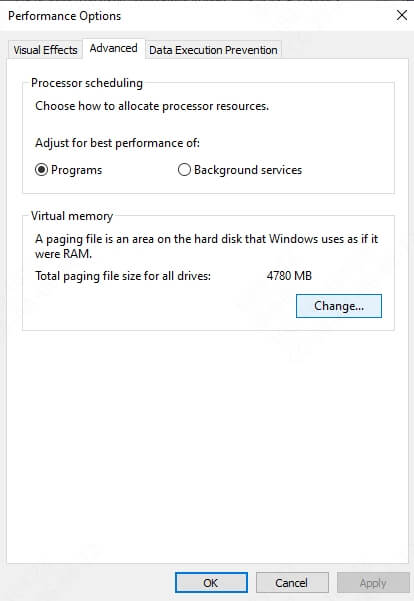
Step 4. Uncheck Automatically manage paging file size.
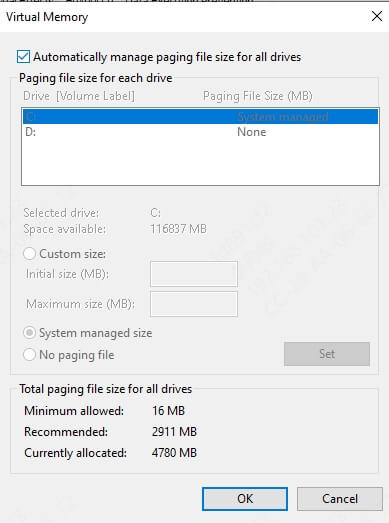
Step 5. Set a custom size (1.5x your RAM) and click OK.
Method 2: Close Unnecessary Programs
Running too many applications simultaneously consumes RAM and CPU, leading to resource exhaustion. Closing unused programs can free up system resources and improve performance.
Steps to close unnecessary programs:
Step 1. Press Ctrl + Shift + Esc to open Task Manager.
Step 2. Under the Processes tab, sort by Memory or CPU usage.
Step 3. Right-click on unnecessary processes and select End Task.
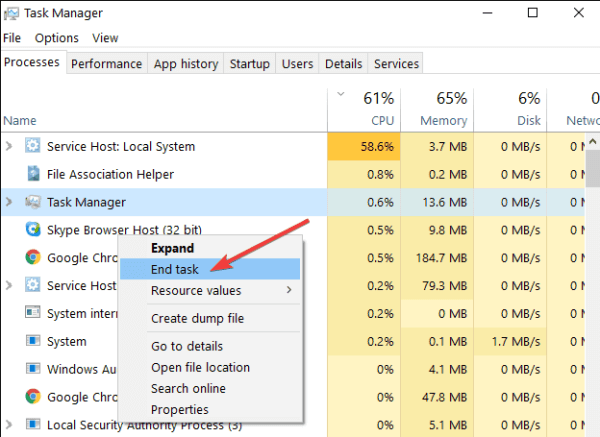
Method 3: Run a Malware Scan
Malware and viruses often run hidden processes that consume system resources. A thorough scan can detect and remove these threats, restoring system stability.
Steps to run a malware scan:
Step 1. Open Windows Security (type in Start menu).

Step 2. Go to Virus & Threat Protection > Quick Scan.
Step 3. For a deeper scan, select Full Scan and remove detected threats.
Method 4: Update Drivers and Windows
Outdated or corrupt drivers can cause system instability and resource allocation errors. Keeping drivers updated ensures compatibility and optimal performance.
PcGoGo Driver Sentry is a powerful driver management tool that automatically scans, detects, and updates outdated drivers with just one click. It eliminates the hassle of manually searching for drivers and ensures your system runs smoothly.
Steps to Update Drivers with PcGoGo Driver Sentry:
Step 1. Download and install PcGoGo Driver Sentry.
Step 2. Launch the program and click Scan.

Step 3. Review the outdated drivers listed and click Update All.
Step 4. Restart your PC to apply changes.
Method 5: Clean Up Disk Space
A cluttered hard drive can slow down your system and trigger resource errors. Removing unnecessary files frees up space and improves performance.
Steps to clean up disk space:
Step 1. Open Disk Cleanup (type in Start menu).
Step 2. Select the drive you want to clean (usually C:).
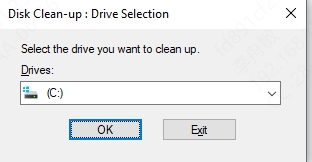
Step 3. Check boxes for Temporary Files, Recycle Bin, and other unnecessary files.
Step 4. Click OK and confirm deletion.
Method 6: Perform an SFC Scan
Corrupt system files can lead to improper resource management. The System File Checker (SFC) tool scans and repairs damaged Windows files.
Steps to perform an SFC scan:
Step 1. Open Command Prompt as Admin.
Step 2. Type sfc /scannow and press Enter.
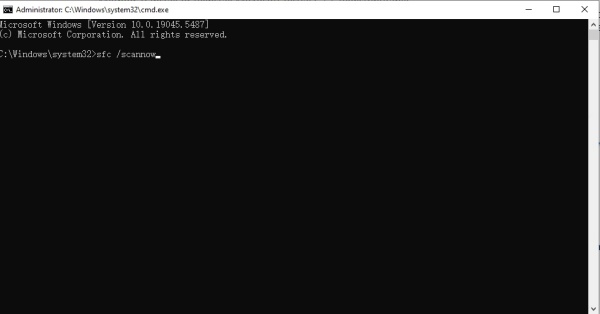
Step 3. Wait for the scan to complete and restart your PC.
Method 7: Adjust Registry Settings (Advanced Users)
Modifying registry values can optimize system resource allocation, but this method should only be used by experienced users.
Steps to adjust registry settings:
Step 1. Press Win + R, type regedit, and hit Enter.
Step 2. Navigate to:
HKEY_LOCAL_MACHINE\SYSTEM\CurrentControlSet\Control\Session Manager\Memory Management
Step 3. Modify PoolUsageMaximum (set to 60).
FAQs
1. What is 0xc000009a Insufficient System Resources Exist to Complete the API?
This error code indicates API requests failing due to low system resources, often linked to memory or CPU limitations.
2. What Does "Insufficient Resources Are Available to Complete a System Request" Mean?
It means the system lacks the necessary RAM, CPU, or disk space to execute a task, requiring optimization or upgrades.
Conclusion
The "insufficient system resources exist to complete the requested service" error can disrupt workflows, but applying the right fixes—such as increasing virtual memory, closing background apps, or scanning for malware—can resolve it. For an effortless solution to outdated drivers, PcGoGo Driver Sentry offers a one-click update feature to keep your system running smoothly. Regular system maintenance and upgrades help prevent future resource shortages, ensuring optimal performance. Download PcGoGo Driver Sentry today and keep your drivers up to date!